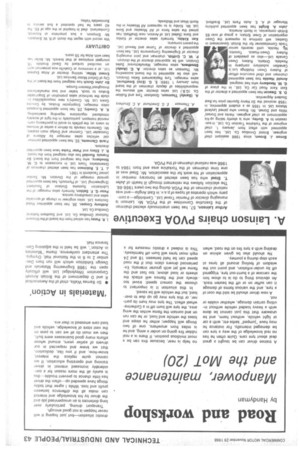Road and workshop
Page 45

If you've noticed an error in this article please click here to report it so we can fix it.
by Handyman
Manpower, maintenance and the MoT (20)
A trainee driver can be taught a great deal about tyre care. Quite often he has no real knowledge of the way a tyre can be damaged internally. For instance he may have "jumped" kerbs etc, with a car or light vehicle, without harm, and be unaware that this just cannot be done with a heavy loaded vehicle without inviting certain damage, whether visible or not.
A new driver should be told the cost of a tyre, and the various forms of damage it can suffer on or off the beaten track. An obvious thing to do is to show him the carcase of a burnt-out tyre, triggered off by under-inflation, and point out the wisdom of feeling around all tyres at each stop during a journey.
He should also be given advice on dealing with a tyre fire on the road, when
no help is near, because this can be a most invidious position. If there is a real rubber fire going on under a wing, and he is miles from anywhere, one of two things will happen; either he stops and loses the vehicle and load, or he can run on and contain the flame within the wing area, the tyre will burn off in a Catherinewheel effect. The tyre may burn its partner, or this tyre may go up due to overload, but the vehicle will be saved.
In this situation it is important to choose the correct speed: travel too slowly and the flames will attack the sheets or load above; too fast and the flame will jet with greater intensity. Experienced drivers claim that if the road speed can be held between 18 and 24 mph most tyres will burn off harmlessly. This is indeed a drastic measure for a drastic situation—but just hoping it will never happen is not good enough.
Transport driving, particularly over long distances is an unsupervised job and the driver by his knowledge and interest • can make all the difference between profit and loss. While I agree that today things have speeded up—often the driver has little chance to prevent trouble—this is surely all the more reason for a considerably increased interest in driver training and operating education. If we cannot quite replace the interest, know-how, and if you like, dedication, that we knew and respected in our drivers of earlier years, around whose efforts many good businesses were built, then we must do all we can to pass on the vast store of knowledge, vehicle arid load care amassed in their era.




















































































































